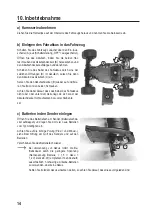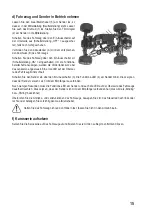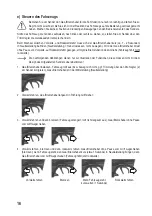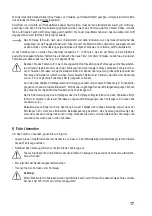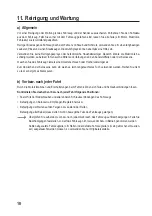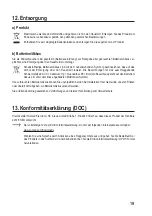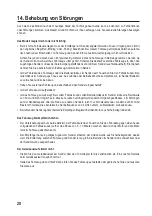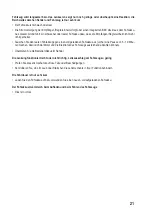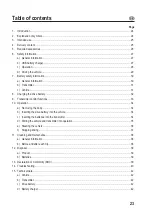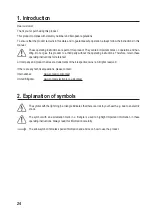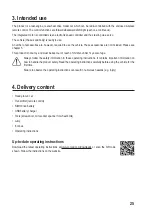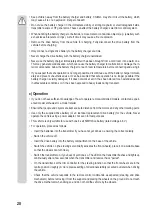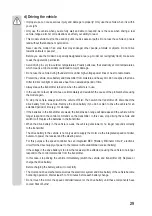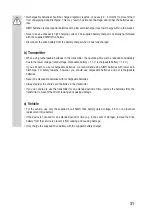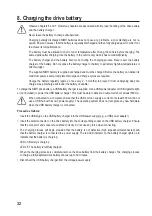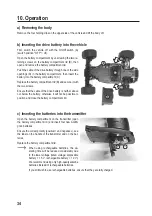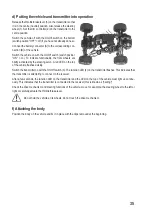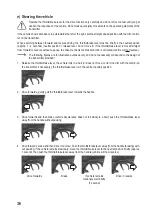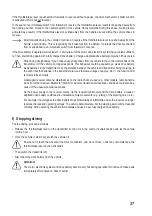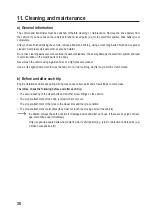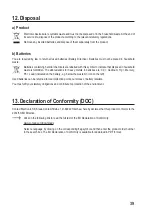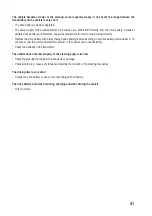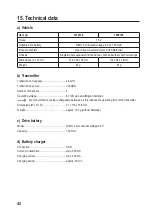
28
•
Keep children away from the battery charger and battery. Children may short circuit the battery, which
may cause a fire or an explosion. Danger of death!
• Do not use the battery charger in the immediate vicinity of strong magnetic or electromagnetic fields,
transmitter aerials or HF generators. These can affect the battery charger's electronic control system.
•
When handling the battery charger or batteries, remove metal or conductive objects (e.g. jewellery such
as necklaces, bracelets or rings). A short circuit may cause a fire or explosion.
•
Remove the drive battery from the vehicle for charging. Fully disconnect the drive battery from the
vehicle before charging.
•
Only connect a single drive battery to the battery charger at a time.
•
Never charge the drive battery with the battery charger unattended.
•
Never use the battery charger immediately after it has been brought from a cold room into a warm one.
This may generate condensation, which can cause the battery charger to malfunction or damage the in-
terior components. Allow the battery charger to reach room temperature before connecting and using it.
•
If you suspect that safe operation is no longer possible, discontinue use of the battery charger immedi-
ately and prevent unauthorised use. It can be assumed that safe operation is no longer possible if the
battery charger is visibly damaged, if it does not work at all, if it has been stored for an extended period
in unfavourable conditions or if it has been exposed to heavy loads during transport.
c) Operation
• If you do not have sufficient knowledge of how to operate remote-controlled models, contact an experi
-
enced model enthusiast or a model retailer.
•
Ensure that people and objects are kept at a safe distance from the motors and any other rotating parts.
•
Use only the supplied drive battery (or an identical replacement drive battery) for the vehicle. Never
operate the vehicle using a power adaptor, not even for test purposes.
•
This vehicle is only suitable for use with one 4-cell NiMH drive battery (rated voltage 4.8 V).
•
For operation, proceed as follows:
- Insert the batteries into the transmitter if you have not yet done so, ensuring the correct polarity.
- Switch the vehicle off.
- Insert the drive battery into the battery compartment on the base of the vehicle.
-
Switch the vehicle on (the steering servo briefly activates the front wheels), place it on a suitable base
so that the wheels can turn freely.
-
Switch the transmitter on, if you haven't yet done so. The LED on the transmitter flashes and lights up
continuously after a few seconds when the transmitter and receiver have "paired".
- On the transmitter, set the trim controller for the steering function so that the front wheels are in the
centre position (roughly). A more precise setting of directional stability is carried out later when driving
the vehicle.
- Check that the vehicle responds to the remote control commands as expected (steering and drive
mechanism) before removing it from the support and placing the wheels on the ground. Do not touch
the drive mechanism when doing so and do not hold the vehicle by the wheels.

